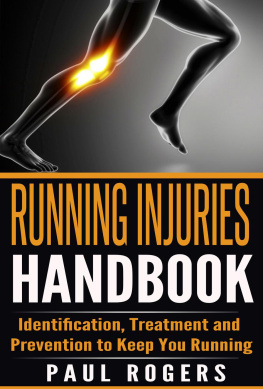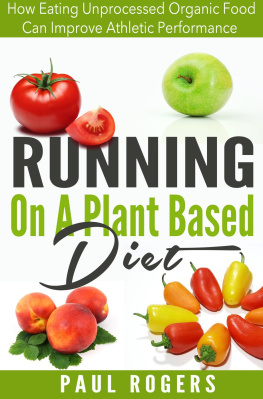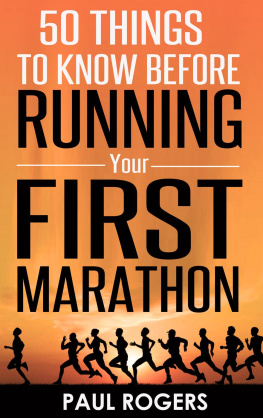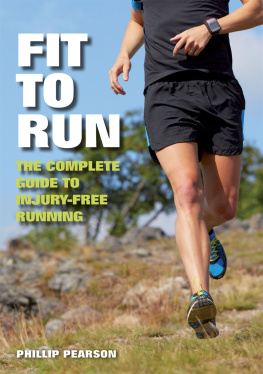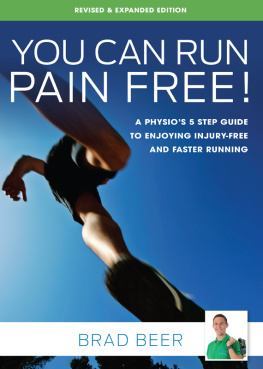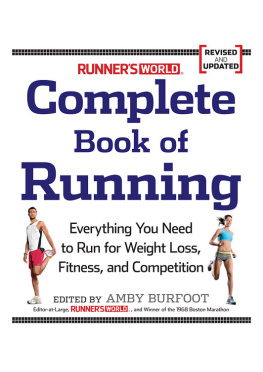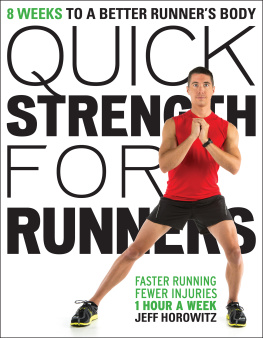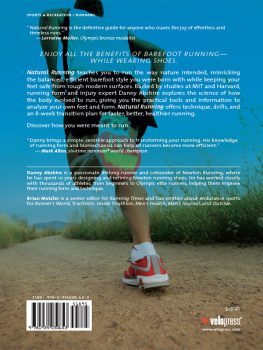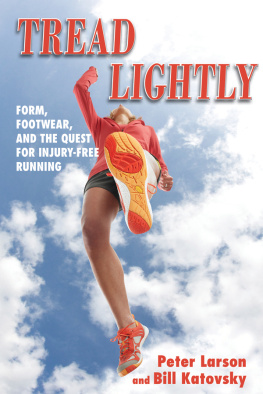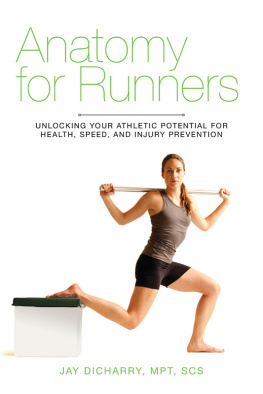Running Injuries Handbook
Identification, Treatment and Prevention to Keep You Running
Paul Rogers
Copyright 2015 All rights reserved.
This document is geared towards providing exact and reliable information in regard to the topic and issue covered. The publication is sold with the idea that the publisher is not required to render accounting, officially permitted, or otherwise, qualified services. If advice is necessary, legal or professional, a practiced individual in the profession should be ordered.
In no way is it legal to reproduce, duplicate, or transmit any part of this document in either electronic means or in printed format. Recording of this publication is strictly prohibited and any storage of this document is not allowed unless with written permission from the publisher. All rights reserved.
The information herein is offered for informational purposes solely, and is universal as so. The presentation of the information is without contract or any type of guarantee assurance. Before beginning any new exercise or new diet program it is recommended that you seek medical advice from your personal physician.
Table of Contents
Introduction

R unning is commonly recognized as one of the best ways to get in shape while at the same time being one of the cheapest forms of exercise available. No complicated rules, no expensive memberships or gear all you need is a pair of running shoes, right?
Everyone may have different motivations for running; losing weight, getting fit or taking part in local races. Whatever the motivation, the benefits come quickly and are addicting, and of course encourage more running!
There is nothing more deflating to a runner than to be sidelined with an injury. For all of its positives, running is a high impact sport, and depending on your age and level of fitness that injury risk can vary greatly. It is estimated that as many as 70% of runners will have some sort of injury within the year that will keep them from running.
The good news is the vast majority of running injuries are not only able to be recovered from, but prevented from happening in the first place. This book is broken into two sections. In section 1 we will discuss the most common types of running injuries, their causes and recommended treatments. In section 2 we will discuss stretching and strengthening routines that, when successfully implemented, should keep you on the roads and off the injured list!
Section I Common Running Injuries
Chapter 1 Frequent Causes of Injury
R unning is a high impact sport prone to injuries. There are many factors at play that determine a runners susceptibility to getting injured, including: age, biomechanical efficiency, weight and previous injury history. There are, however, four common causes that seem to precipitate injury in many runners.
Too Much Too Soon
R unning is a sport which causes adaptations to occur in the body that enable runners to continue to improve. There are primary three areas of the body that adapt as a runner continues on a training program:
- Cardiovascular
- Musculature
- Skeletal
Progressions and adaptions to these body systems progress in that order, with the cardiovascular system adapting the quickest and the skeletal system taking the longest to adapt. It is not uncommon for runners who are enthusiastic about their progress to train at a level their quickly adapting cardio system can accommodate but that their muscular or skeletal system is not yet prepared to handle. When this happens, injury is often the result.
Speed Kills
T he rule of Too much too soon does not simply apply to the amount of miles ran. Enthusiastic runners will often either run their routine running days too fast, or include several days worth of speedwork in a training week. Doing speedwork takes a special kind of toll on the muscular system, which requires a more deliberate level of recovery. Unfortunately, adding rest days is something that is seldom done by a runner on their quest to forward progress so the added speedwork often results in injury.
Like most things, the threshold at which a runner can handle speedwork is a person thing. A conservative estimate is to do no more than 1 day of speedwork a week, and that is a schedule that will work well for most runners. Some people may be better served by doing 1 session every two weeks, while others will be able to do several in a week. The important thing is to find the limit at which you can train and not get injured. Just because you get away with 2 speed sessions one week doesnt mean that is a formula that will work long term. A good guideline to follow is when in doubt, drop the speedwork and run it easy.
Poor Form
R unning form is a tricky thing and changes should be addressed with caution. However, as a general rule of thumb, runners that run with their heels striking first will absorb more impact forces into their legs and lower body which could eventually result in injury. It is a generally agreed upon principle that running so that the forward foot lands on the midfoot directly under the runners center of gravity provides the least amount of ground contact time and the least amount of impact force to travel up through the leg.
When runners heel strike, they land with the forward foot landing in front of them heel first, which essentially provides a braking action. This braking action also causes impact forces to go up into the leg and be absorbed into the joints of the lower body which can, over time, cause injury. Changes to running form should, however, be exercised with caution and occur gradually over time.
Poor Footwear
N o doubt many an aspiring runner has started their running career with a pair of running shoes purchased off the athletic rack at the local department store, only to become injured and have their running career cut short. The most important purchase you will ever make as a runner is a proper pair of running shoes. There is a pair of shoes available for every supinator, pronator, and neutral runner out there. Getting properly fitted for a pair of shoes at a specialty running store goes a long way in preventing early and unnecessary injuries.
Chapter 2 - Achilles Tendonitis
A chilles tendonitis is when the tissue connecting the heel bone to the calf muscle becomes aggravated. In normal instances, the Achilles tendon, which is located at the back of the leg, is quite strong and flexible and if it gets excessively stressed, there is a possibility for it to rupture. The tissue helps with jumping, walking or running because its able to withstand stress. But when overused, it swells, becomes inflamed and irritated therefore causing pain. Those affected are mostly sportsmen who engage in running and related activities. Although it affects people of all ages, those between the ages of 35-60 are highly susceptible.
So what causes Achilles tendonitis? While stress on the feet is one of the most known causes, there are other causes and among them are sudden increase in physical activity, pushing the body too fast, sports that entail starting and stopping quickly, bad footwear and poor fitting shoes and severe injury to the Achilles tendon. Also, running on uneven surface, running high up the high and a tight calf-muscle and failure to warm up before exercising are some of the known causes of this condition.
For some people, the Achilles tendon may be very weak to the extent that makes it prone to rupture. Some of the factors that weaken it include:
Next page
